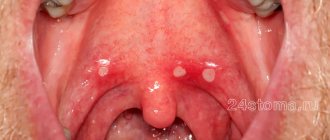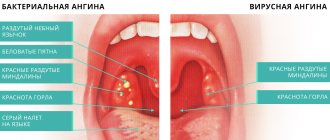There are a large number of dental diseases that do not manifest themselves for a long time. In this case, the pathological process develops and in the future can lead to irreversible consequences.
One of these pathologies is cementoma, i.e. a tumor located on the jaw bone. Cementoma, as a rule, does not cause any discomfort to the patient and practically does not manifest itself in any way, which is its danger.
What it is
Cementoma is a benign neoplasm in the oral cavity that has a connective nature. The main component of the tumor is rough fibrous tissue, which is similar to dental cement.
The pathology is extremely rare in adulthood. As a rule, the disease develops in people under twenty years of age. Cementoma can be classified as a female disease, since in most cases the anomaly occurs in females.
As a rule, cementoma is located in the area of the canines and incisors of the lower jaw. It is extremely rare in the upper jaw.
Reasons for the development of pathology
Experts in the field of dentistry still cannot identify specific reasons that are guaranteed to lead to the formation of a benign tumor on the jaw bone. Today, experts identify several factors that can provoke the development of pathology:
- chronic course of inflammatory processes in the oral cavity - osteomyelitis, actinomycosis, fibrous periodontitis and others,
- severe injury to the jaw bone due to a blow, bruise,
- systematic mechanical damage to hard or soft tissues of the oral cavity - incorrectly installed fillings, dentures, orthodontic apparatus (brackets).
The photo shows osteomyelitis.
Genetic predisposition can also be added to possible predispositions. Negative external influences, such as smoking or radiation therapy, can also contribute to the development of pathology.
Kinds
Neoplasms are classified according to their form:
Local. Develops in the root region of only one tooth.
Diffuse. It affects several dental units and a large area of the jaw bones. The diffuse form indicates that it belongs to the histological type and has its own varieties:
- true – benign neoplasm;
- cement-forming fibroma;
- fibrous periapical dysplasia;
- Gigantoform - multiple hereditary pathology.
All these varieties are very similar to each other, and without an accurate diagnosis, it is difficult for a specialist to correctly diagnose one or another form of diffuse cementoma.
Reviews
Most patients treated for cementoma note that they did not notice the symptoms of its development, and the diagnosis of the disease was the result of a visit to the dentist for other reasons.
That is why experts recommend not to neglect regular preventive examinations, since in most cases it is easier to prevent the development of the disease than to eliminate it, especially at an advanced stage.
If you have encountered any type of cementoma, please share your experience regarding the course and treatment of this disease.
If you find an error, please select a piece of text and press Ctrl+Enter.
Tags jaw
Did you like the article? stay tuned
Main characteristics
True cementoma is a benign neoplasm of coarse fibrous tissue. The true form is characterized by an extremely slow course, but the neoplasm can grow to unlimited sizes. At the initial stage, the pathology does not manifest itself in any way, only after a while the patient begins to experience discomfort when pressing on the problem area. An advanced form can lead to deformation of the jaw bone and the eruption of a tumor, which can lead to infection.
Cement-forming fibroma is also not a malignant neoplasm. It is characterized by very slow growth and mild symptoms. The tumor is dangerous when localized in the upper jaw, where its growth can lead to damage to the sinuses.
Fibrous periapical dysplasia is asymptomatic. As a rule, it is localized in the anterior parts of the lower jaw. The pathological process takes place in dental cement and bone tissue, which can provoke a tooth root fracture.
Gigantoform cementoma, on the contrary, develops extremely quickly. It has been proven that this type of cementoma is a hereditary disease. As a rule, it is observed in several family members. Most often, neoplasms are located symmetrically to each other.
Characteristic symptoms
One of the most dangerous characteristics of cementoma is its asymptomatic course. In the first stages of development of the pathology, the patient does not experience any discomfort or pain. Therefore, most often the tumor can only be detected at a dentist’s appointment.
“Dangerous disease! I noticed it already at the last stage, when I went to the dentist to treat a tooth, I just wanted to put a filling and remove one. As a result, they discovered cementoma... And indeed, there was no pain at all, I didn’t feel anything. I’m sure that I’m still very lucky that everything coincided like that...”
Nataly, from correspondence on the forum www.32top.ru
The tumor can be identified by x-ray.
As the size of the tumor increases, the thickness of the cortical plate decreases, which creates unnecessary pressure on the periosteum. At this stage of pathology development, the patient may experience the following symptoms:
- discomfort and moderate pain when eating or talking,
- unpleasant sensations at the moment of mechanical impact on the causative area,
- slight deformation of the enamel structure, change in its color.
When the tumor reaches a large size, it can lead to rupture of the mucous membrane and soft tissues in the oral cavity. In the most advanced cases, there is a risk of deformation of facial features and even fracture of the jaw bone.
Treatment
At an early stage, treatment is minimal and low-traumatic. But, as a rule, due to its asymptomatic course, the pathology is detected at later stages. Treatment directly depends on the type of pathology. In some cases, conservative therapy is sufficient, in which the doctor prescribes special anti-inflammatory drugs. The patient is placed under constant observation.
During surgery, the tumor is removed with partial excision of the affected bone tissue, if any. In some cases, it is necessary to remove the affected tooth.
Features of surgical intervention
The operation is prescribed by the attending physician. The actions of surgeons consist of removing the formed tumor using resection. During the operation, the part of the bone that was affected is removed. The tooth that was subject to the pathological process is also eliminated.
The operation is necessary due to the high risk of complications such as the spread of tumor formation into the upper jaw, damage to the integrity of the bone tissue, as well as the occurrence of perforation in the oral mucosa.
The tumor is not removed in fibrotic and gigantic type of the disease. With these types of cementoma, you can do without surgical intervention, since these forms of tumor are not characterized by active growth.
During therapy, the patient is recommended to take anti-inflammatory drugs and constant monitoring by a doctor. If complications arise, surgery may be prescribed, but if the process of rejection of pathological tissues proceeds without a negative prognosis, then the tumor gradually disappears naturally.
To speed up the process, specialists can perform mini-operations to create a saucer-shaped depression, due to which recovery occurs faster.
What complications may arise
Complications, as a rule, arise when a tumor forms in the anterior part of the upper dentition. As the tumor grows, there is a high probability of it growing into the sinuses, which is fraught with serious complications.
Another no less dangerous complication may be a breakthrough of the mucous membrane with the eruption of the tumor outward. As a result, the risk of infection entering the affected tissue increases significantly. Infection is accompanied by the development of inflammation with further spread of the pathological process in the oral cavity.
Symptoms of cementoma
Cementoma in most cases is not accompanied by any specific symptoms, which significantly complicates its diagnosis. Once the tumor reaches a large size, the cortical plate becomes thinner and the formation puts pressure on the periosteum, resulting in mild pain when the affected jaw is active. During palpation examination, bone thickening is felt in the area where the pathology develops.
In some cases, the neoplasm can grow into the mucous membrane, resulting in the formation of a perforation hole, which serves as a site of infection. This provokes frequent inflammatory processes in the area of pathology development. Ingrowth of cementoma into the maxillary sinuses also occurs, which is accompanied by the characteristic symptoms of sinusitis.
Prevention
To minimize the risk of developing the disease, it is necessary, first of all, to ensure proper and complete oral hygiene. Experts include the following main preventive measures:
- brushing your teeth morning and evening, using dental floss or brushes;
- visiting an oral hygienist every six months for a procedure to remove soft plaque and hard plaque;
- Conducting a preventive examination with a dentist twice a year;
- timely treatment of existing dental diseases.
Late diagnosis of cementoma is fraught with violations of the integrity of bone tissue, the formation of perforations in the jaw bone, as well as the spread of the tumor to healthy tissue. To minimize the risk of developing pathology, you need to carefully monitor your oral health and visit the dentist as soon as necessary.
How is diagnostics carried out?
Diagnosis of cementoma is possible only in a dental clinic. It is often possible to identify it after the patient contacts him, but for a different purpose, for example, for the treatment of caries or standard prevention. If, during a visual examination, a specialist develops appropriate suspicions or characteristic symptoms occur, the patient will be sent for an x-ray.
Histology helps to conduct a thorough study of the structure and structure of deformed tissues. The sample is placed on a microslide (slide for the object being studied), after which it is carefully examined in a multiply enlarged format, that is, under a microscope. This allows you to accurately determine the specific form of the tumor and make a final diagnosis. Histological examination also makes it possible to differentiate cementoma from other types of tumors, including malignant ones.
Histological examination is also performed for diagnosis
General information
The concept of cementoma unites a group of benign neoplasms of dental cement, which, in turn, is a thin layer of the root.
In dentistry, the disease has several varieties. However, the main feature characteristic of all tumors is the presence of cementum-like tissue.
As a rule, the tumor occurs in females under 25 years of age and is localized on the lower jaw in the area of the molars and incisors.
Experts note the slow development of cementoma, which can deform the facial bone.










